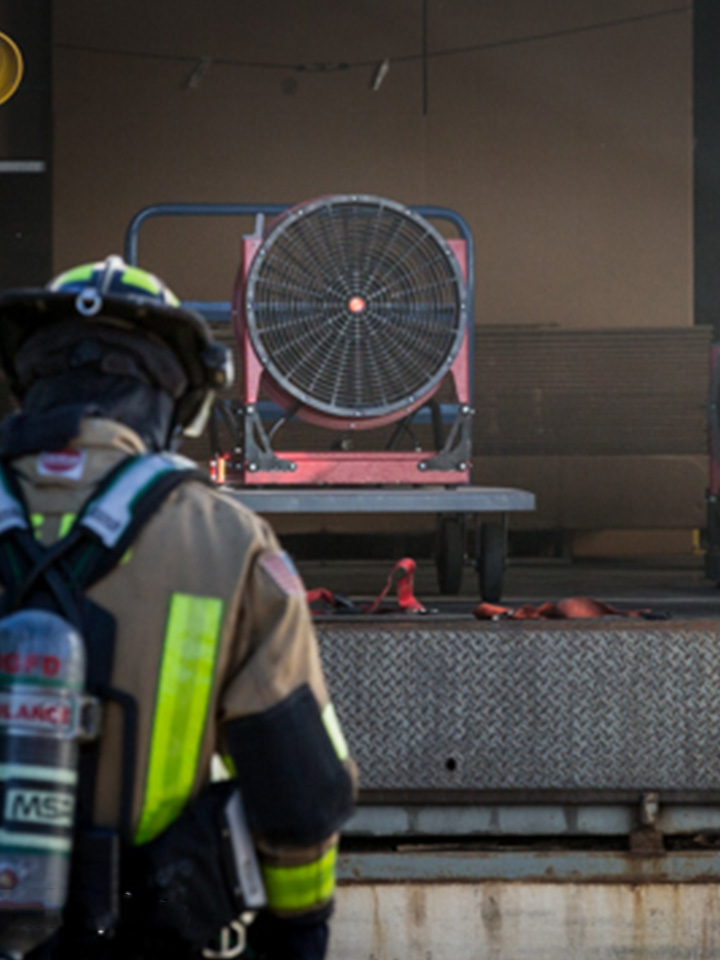What We Know

What We Know
- How much space does it consume in the apparatus?
- How quickly can it be deployed?
- How many people does it take to deploy it?
- How quickly does it ventilate a structure?
- How long does it run at a given volumetric airflow?
- How long will the product last?
- How much maintenance does it require?
BlowHard is a solution because we have optimized
each of the above. Here’s how:
How much space does it consume in the apparatus?
- BlowHard’s focus is increased power while reducing the fan footprint, resulting in very compact fans.
- BH-20 (20” Blade): 24” x 24” x 10” with 10,200 CFM
- Quickee (20” Blade): 21” x 21” x 9 ¾” with 11,400 CFM
- Commando (24” Blade): 25 ¼” x 25 ¼” x 10 ½” with 16,300 CFM
How quickly can it be deployed?
How many people does it take to deploy it?
- Weight and deployment
- The Quickee weighs 45 lbs., while the BH-20 and Commando both come in at around 60 lbs. If one person is capable of lifting an item in this weight range, they are also physically capable of deploying the fan without assistance.
- Balance (distribution of weight) and deployment
- Lifting something heavy takes less energy and easier on your body when it is closer to your body. Conversely, holding something heavy away from your body takes more energy, increasing the load on your muscles and spine. In fact, if one were to hold a heavy object out with an arm’s length, it would increase the burden on their lower spine by 15 times the original weight. In this instance, a 5-pound box would feel like 75 pounds.
- BlowHard fans are designed to keep the weight close to your body during transport, as well as evenly balanced, side to side, front to back. When you carry a BlowHard fan, you can, for the most part, keep the weight close and your arms straight down and near you, allowing your spine to do most of the work of supporting the load. This becomes increasingly important as fatigue increases.
How quickly does it ventilate a structure?
Here’s where it starts getting fun…if you’re a BlowHard fan. The majority of our research and development is in performance. You can geek out with us for more information, but here’s the quick version. We focus on maximizing volumetric air flow to match the ability of the components of the fan. Then we focus on the jet-stream to maximize the pressure in the structure. BlowHard PPV fans are exceptionally effective at ventilating structures quickly. Then if you consider the time and effort saved while deploying it…Cha-Ching! If you don’t have one, don’t take our word for it! Get a demo, see for yourself. My guess? You’ll be blown away.
How long does it run at a given volumetric airflow?
- BH-20: Average35 minute runtime at 10,200 CFM, AMCA based.
- Quickee: Average 45 minute runtime at 11,400 CFM, AMCA based.
- Commando: Average 45 minute runtime at 16,300 CFM, AMCA based.
How long will the product last?
How much maintenance does it require?
Have a differint Question?
 The Next Revolution Is Here
The Next Revolution Is Here


